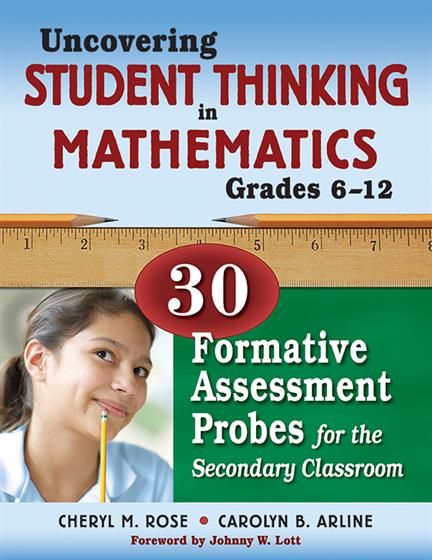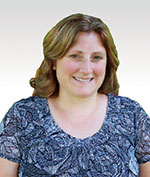Foreword by Johnny W. Lott
Preface
Acknowledgments
About the Authors
1. Mathematics Assessment Probes
Introduction
What Types of Understandings and Misunderstandings Does a Mathematics Assessment Probe Uncover?
How Were the Mathematics Assessment Probes Developed?
What Is the Structure of a Mathematics Assessment Probe?
What Additional Information Is Provided With Each Mathematics Assessment Probe?
What Mathematics Assessment Probes Are Included in the Book?
2. Instructional Implications
Differentiating Instruction
Assessing Points of Entry
Analyzing Trends in Student Thinking
Giving Student Interviews
Promoting Student-to-Student Dialogue
Developing Vocabulary
Allowing for Individual Think Time
Improving Students' Process Skills
Assessing Effectiveness of Instructional Activities
Moving Beyond the Individual Classroom
Summary
3. Number and Operations Assessment Probes
Probe 1: What Is the Value of the Digit?
Teachers' Notes: What Is the Value of the Digit?
Probe 1a: What Is the Value of the Digit? Variation
Probe 2: What Is the Meaning of 2/3?
Teachers' Notes: What Is the Meaning of 2/3?
Probe 2a: What Is the Meaning of 2/3? Variation
Probe 3: Is It Equivalent?
Teachers' Notes: Is It Equivalent?
Probe 3a: Is It Equivalent? Variation
Probe 4: What's Your Estimate?
Teachers' Notes: What's Your Estimate?
Probe 5: Is It an Estimate?
Teachers' Notes: Is It an Estimate?
Probe 6: Is It Simplified?
Teachers' Notes: Is It Simplified?
Probe 6a: Is It Simplified? Algebraic Variation
Probe 7: Where Is a Million?
Teachers' Notes: Where Is a Million?
Probe 8: How Low Can You Go?
Teachers’ Notes: How Low Can You Go?
Probe 8a: How Low Can You Go? Variation
Probe 9: What’s Your Addition Strategy?
Teachers’ Notes: What’s Your Addition Strategy?
Probe 9a: What’s Your Addition Strategy? Decimals Variation
Probe 9b: What’s Your Addition Strategy? Fractions Variation
Probe 10: What’s Your Subtraction Strategy?
Teachers’ Notes: What’s Your Subtraction Strategy?
Probe 10a: What’s Your Subtraction Strategy? Decimals Variation
Probe 10b: What’s Your Subtraction Strategy? Fractions Variation
Probe 11: What’s Your Multiplication Strategy?
Teachers’ Notes: What’s Your Multiplication Strategy?
Probe 11a: What’s Your Multiplication Strategy? Decimals Variation
Probe 12: What’s Your Division Strategy?
Teachers’ Notes: What’s Your Division Strategy?
Probe 12a: What’s Your Division Strategy? Decimals Variation
4. Geometry, Measurement, and Data Assessment Probes
Probe 1: What’s the Measure?
Teachers’ Notes: What’s the Measure?
Probe 1a: What’s the Measure? Variation
Probe 2: Are Area and Perimeter Related?
Teachers’ Notes: Are Area and Perimeter Related?
Probe 3: What’s the Area?
Teachers’ Notes: What’s the Area?
Probe 4: What’s the Capacity?
Teachers’ Notes: What’s the Capacity?
Probe 5: Is It Transformed?
Teachers’ Notes: Is It Transformed?
Probe 6: Are They Similar?
Teachers’ Notes: Are They Similar?
Probe 7: What Do You Mean?
Teachers’ Notes: What Do You Mean?
Probe 7a: What Do You Mean? Variation
Probe 8: Name of the Graph?
Teachers’ Notes: Name of the Graph?
Probe 9: Graph Construction?
Teachers’ Notes: Graph Construction?
5. Algebra and Data Assessment Probes
Probe 1: Equal or Not Equal?
Teachers’ Notes: Equal or Not Equal?
Probe 2: Is It the Same as a+b?
Teachers’ Notes: Is It the Same as a+b?
Probe 3: M & N’s?
Teachers’ Notes: M & N’s?
Probe 4: What’s the Substitute?
Teachers’ Notes: What’s the Substitute?
Probe 5: Is It True?
Teachers’ Notes: Is It True?
Probe 6: Solving Equations?
Teachers’ Notes: Solving Equations?
Probe 7: Correct Representation of the Inequality?
Teachers’ Notes: Correct Representation of the Inequality?
Probe 8: Is It a Variable?
Teachers’ Notes: Is It a Variable?
Probe 9: Binomial Expansion?
Teachers’ Notes: Binomial Expansion?
Probe 10: Is It Quadratic?
Teachers’ Notes: Is It Quadratic?
Resource A: Note Template for QUEST Cycle
References
Index



